Here in the Pacific Northwest, we’re lucky to have a climate that allows for foraging year-round, even during the dark, wet days of late fall and winter. If you’re hoping to include a few wild foods in your Thanksgiving feast, keep reading…
Wild Mushrooms
By late November, those of us in Washington need to think more strategically about our mushroom hunting spots. The bread-and-butter golden chanterelle harvest is mostly done by this time, the surviving specimens oversized, floppy, and waterlogged. Skiers own the mountains now and even many low-elevation habitats should be ruled out because of recurring hard frosts. Head for the coast or the southern Olympic Peninsula and look for microclimates where fungi can persist. Search out those hardier winter species such as yellowfoot chanterelles and hedgehogs. Hint: they prefer moist, mossy forests and plenty of woody decay.
If you’re willing to travel, make tracks for southwestern Oregon where kings and matsutake are still available. My favorite this time of year, though, is the black trumpet, which is just starting to fruit and can be found in mixed forests with oak. Sautéed in a little butter, it tastes just like fall.
Shellfish
We’re coming into the high time for shellfish. The summer spawn is over and the clams, mussels, oysters, and crabs are putting meat back in their shells, rather than using their fat reserves for reproduction.
Many a Nor’westerner likes to give a regional twist to the Turkey Day dinner, including a shellfish course of soup or stew, or simply a mess of Dungeness crabs on the table to kick off the proceedings. I try to dive for my crabs when I can, though the seafood market is a dry alternative. One year I made a Dungie crab bisque for twenty. It was time-consuming peeling all that crab—I’d recommend shelling out (pardon the pun) for lump crab meat instead—but oh so decadent and delicious. Unfortunately, by the time the labor-intensive bisque was ready, I think many of us were too deep into a Northwest wine tasting to fully appreciate it.
An elegant, tomato-based shellfish stew in the Italian tradition is a great way to charm your guests and add European flair to the American meal. I make one chock full of clams, mussels, shrimp, scallops, and squid (note: Seattle’s public fishing pier is host to a multi-lingual party of midnight squidders this time of year that is not to be missed). You can find my shellfish stew recipe in Fat of the Land. Or try a simple New England-style Clam Chowder, of which I have a couple recipes, here and here. Steamed littleneck clams can be easily gathered and prepared in minutes. A splash of white with a few sprigs of parsley and couple smashed garlic cloves is all it takes, or you can add a bit more prep time for Clams with Herbed Wine Sauce. Don’t forget crusty bread for dipping.
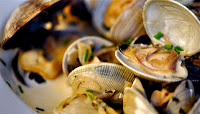
The South Sound and Hood Canal are good options for digging littleneck clams and picking oysters, while razor clam digs on the sandy ocean beaches are a time-honored way to stock the larder. In Oregon, Tillamook and Netarts bays are popular with clam diggers. Check the state Fish & Wildlife web sites for information on beach openings and limits.
Greens
Some of our spring weeds reappear in fall with the cool weather. One of the better bets is wild watercress, which can be gathered in quantity and tastes so much better than its domesticated counterpart. Spice up your green salad with watercress, pair it with wild mushrooms in a stuffing, or make a soup or side dish with it.
Berries
We’re lucky to have a dozen varieties of huckleberry in Washington and Oregon. Our late ripening variety is the evergreen huckleberry, Vaccinium ovatum, and it’s often available right around Thanksgiving. Of all the huckleberries, it’s one of the easiest to pick, with sweet berries that can be pulled off the branches in bunches, so get your fill, though be warned: as with our fall mushrooms, this is not a good evergreen huckleberry year. Should you find some, there’s nothing better than a huckleberry pie or cobbler to put an exclamation mark on a wild Thanksgiving meal.
Like this:
Like Loading...
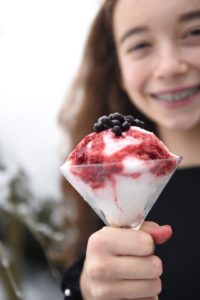 WHAT DO YOU DO when it snows in Seattle? Make a Huckleberry Snow Cone!
WHAT DO YOU DO when it snows in Seattle? Make a Huckleberry Snow Cone! 
 THE
THE 



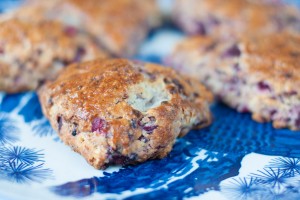 THE RED HUCKLEBERRY (Vaccinium parvifolium), tart and pretty, is the first of our huckleberries to fruit in the Pacific Northwest. The trailing blackberry (Rubus ursinus), smaller and firmer in comparison to non-native relatives such as the ubiquitous Himalayan blackberry, with a more complex taste profile, is often nearby. Unlike other varieties, trailing blackberries don’t grow on upright canes; they snake along the ground and over deadfall, hence their common name.
THE RED HUCKLEBERRY (Vaccinium parvifolium), tart and pretty, is the first of our huckleberries to fruit in the Pacific Northwest. The trailing blackberry (Rubus ursinus), smaller and firmer in comparison to non-native relatives such as the ubiquitous Himalayan blackberry, with a more complex taste profile, is often nearby. Unlike other varieties, trailing blackberries don’t grow on upright canes; they snake along the ground and over deadfall, hence their common name.



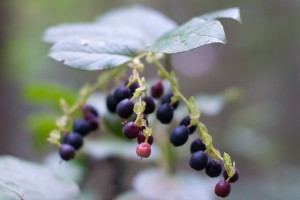


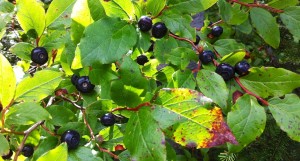

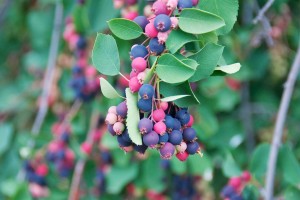
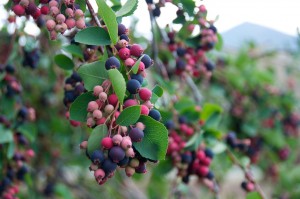

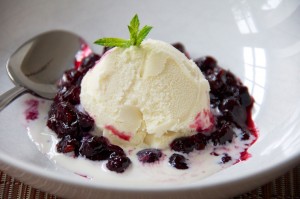

.jpg)






